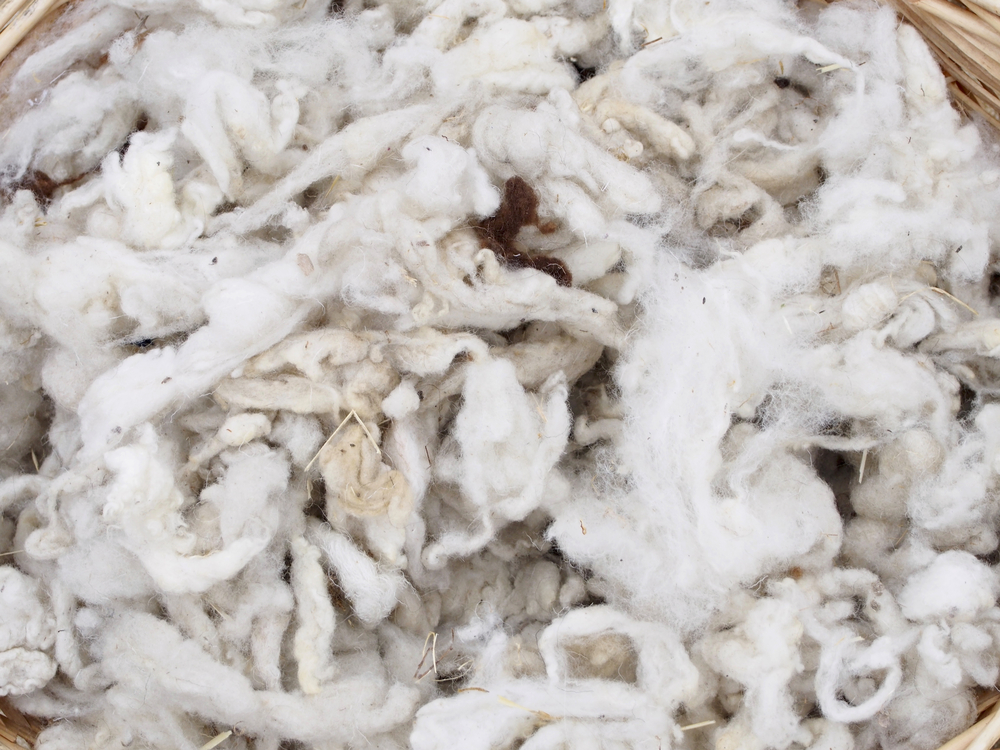If you’ve ever wondered how to clean sheep wool and maintain its natural qualities effectively, you’ve come to the right place.
To clean sheep wool effectively:
1. Gently handwash it in lukewarm water with a mild detergent, avoiding vigorous agitation.
2. Rinse thoroughly, squeeze out excess water by pressing it between clean towels, and then lay the wool flat on a clean surface to air dry.
3. Avoid wringing or hanging, as this can distort the wool’s shape and texture.
Interested in preserving the quality of your sheep wool items? Keep reading for essential tips on maintaining their softness and durability!

How can clean sheep wool improve daily life, and what cleaning techniques are essential?
Clean sheep wool is incredibly important due to its wide-ranging uses and benefits. It’s a natural, renewable resource used in clothing, bedding, and insulation. Clean wool is cozy, breathable, and helps regulate temperature.
Plus, it’s eco-friendly, as shearing sheep doesn’t harm them. So, from comfy sweaters to warm blankets, clean sheep wool plays a vital role in our daily lives.
Proper cleaning techniques are crucial for various reasons. They help maintain hygiene, extend the lifespan of items, and improve overall well-being.
Whether it’s your home, personal belongings, or even your health, using the right cleaning methods ensures everything stays in good shape, looks great, and keeps you and your environment in tip-top condition.
Cleaning is a part of daily life for most of us. As I’ve learned, it’s about tackling dirt, stains, and clutter in a smart way. One common and practical approach is to start with the basics: decluttering, dusting, and then tackling specific tasks like vacuuming or mopping. It’s all about making your space cleaner and more comfortable.
How do I prepare for wool cleaning?
Before diving into wool cleaning, gathering the right materials and tools is vital.
1. Soap options for washing wool: Choosing a suitable soap is crucial. Opt for a mild, pH-neutral one to prevent damage to the wool fibers. I’ve discovered that a gentle soap helps maintain the wool’s natural qualities.
2. Essential tools for cleaning: You’ll need a basin or sink, lukewarm water, a soft brush or cloth, and a clean towel. My experience has taught me that using hot water or harsh scrubs can lead to shrinking or damage, so it’s best to handle wool carefully.
When handling wool for cleaning, taking the time to sort and inspect it properly is crucial for success.
1. Identifying contaminants: While sorting, be vigilant for contaminants like dirt, debris, or foreign fibers. “I once missed a piece of gum stuck in my wool sweater,” recalls a fellow wool enthusiast. Removing these unwanted materials is essential for maintaining the wool’s quality.
2. Separating different types of wool: To prevent color bleeding or damage, separate wool items of different types or colors before cleaning. This simple step ensures that your cherished wool items stay vibrant and intact throughout the cleaning process.

Washing sheep wool: A gentle approach
A. Pre-wash preparations
1. Dust and debris removal: Before starting the washing process, removing any dust and debris from the wool is essential. A wool enthusiast once said, “I found leaves stuck in my wool scarf!” Gently shake or lightly brush the wool to eliminate these unwanted elements.
2. Soaking for relaxation: To prepare the wool for washing, give it a nice soak in lukewarm water. This step helps the wool fibers relax and makes cleaning more effective.
B. The washing process
1. Choosing the right water temperature: When it’s time to wash, be mindful of the water temperature. Stick to lukewarm water; hot water can lead to shrinking. “I accidentally used hot water once, and my wool shrunk noticeably,” noted a fellow wool lover.
2. Using a gentle cleaning solution: Opt for a mild, pH-neutral detergent specifically designed for wool. Using harsh detergents can damage the delicate fibers. A gentle cleaning solution ensures your wool items stay soft and vibrant.
C. Rinsing and draining
1. Ensuring all soap is removed: After washing, thoroughly rinse the wool to remove all traces of soap. Soap residue can lead to stiffness and discomfort in your wool items.
2. Handling delicate wool during this phase: Be extra gentle when handling wet wool, as it’s more susceptible to damage. Avoid wringing or twisting; gently press out excess water by rolling the wool in a clean towel. These steps help preserve the quality of your beloved wool pieces throughout the cleaning process.
Drying and finishing: giving your wool the perfect finish
After cleaning, it’s time to focus on drying and finishing your wool items to ensure they maintain their softness and shape.
A. Proper drying techniques
1. Air drying vs. machine drying: When it comes to drying wool, choosing the right method is crucial. Air drying is the gentlest option and helps maintain the wool’s natural texture. On the other hand, machine drying can lead to shrinking and loss of softness.
2. Avoiding direct sunlight: If you opt for air drying, avoid direct sunlight. UV rays can damage the wool’s fibers and fade its colors over time.
B. Restoring wool’s natural texture
1. Fluffing and reshaping: Once your wool item is dry, gently fluff and reshape it to restore its original form. This can be done by hand or with a soft brush. Wool enthusiasts often find that a bit of fluffing brings their favorite items back to life.
2. Softening techniques: If your wool feels stiff after washing, various softening techniques exist to explore, such as using a wool-specific conditioner or fabric softener during the final rinse. These methods help maintain the softness and comfort of your cherished wool pieces, ensuring they’re ready to be enjoyed once again.
Storage and maintenance for clean sheep wool
After cleaning your sheep wool, storing it correctly and maintaining its quality is vital.
Storing clean sheep wool:
Protecting against pests and moisture is essential. Consider using natural deterrents like cedar or lavender sachets and ensure the storage area stays dry. Opt for breathable storage containers like cotton bags or cardboard boxes, avoiding plastic bags that trap moisture.
Regular maintenance:
Periodically brush your clean sheep wool items with a soft-bristle brush to remove dust and maintain fluffiness. For stains or spills, use gentle cleaning methods to avoid fiber damage. Regularly inspect your stored wool for damage or pests, catching issues early to protect your valuable wool pieces.
By following these steps, your clean sheep wool will stay fresh and ready for use, preserving its quality for the long term.
Also Read: How to Store Raw Sheep Wool?
Key takeaways
In my experience, cleaning sheep wool demands a gentle touch, emphasizing the significance of proper cleaning techniques like gentle handwashing with mild detergent and lukewarm water to preserve its quality. Before starting the cleaning process, sorting and inspecting the wool becomes crucial.
It’s my responsibility to remove contaminants and segregate different types or colors to prevent potential damage during the cleaning process. Once cleaned, proper drying and finishing are essential; selecting the right method, avoiding direct sunlight, and employing techniques like fluffing and softening help me restore the wool’s natural texture.
Furthermore, I’ve learned that effective storage and maintenance play a crucial role in protecting clean sheep wool from pests and moisture. Regular brushing and inspections are part of my routine to ensure its long-term freshness and durability.
Frequently asked questions
Can I clean sheep wool in a washing machine?
It’s generally better to handwash sheep wool to prevent potential shrinkage and damage. If you must use a machine, select a gentle cycle with cold water and a mild detergent designed for wool.
How do I remove stains from sheep wool?
For stains, blot the affected area gently with a clean, damp cloth. Avoid rubbing vigorously to prevent damage. If the stain persists, consult a professional cleaner.
Can I use regular laundry detergent on sheep wool?
It’s best to use a mild, pH-neutral detergent designed for wool to avoid damaging the fibers. Regular detergents can be too harsh.
Is it safe to soak sheep wool for a long time?
It’s generally safe to soak sheep wool for up to 15-20 minutes to help relax the fibers. However, extended soaking may lead to excessive moisture absorption, so keep an eye on the time.
How often should I clean my sheep wool items?
Cleaning frequency depends on usage. Items like sweaters and scarves may not need frequent washing if not soiled. Instead, consider airing them out and spot-cleaning when necessary.
Can I use fabric softeners on sheep wool?
Avoid fabric softeners, which can leave residues that diminish the wool’s natural softness. Instead, opt for a wool conditioner during the final rinse for added softness.
Is it safe to dry sheep wool in direct sunlight?
Direct sunlight can fade the colors and damage wool fibers. It’s best to air-dry wool in a shaded or well-ventilated area.
Can I use a regular brush to remove lint and debris from my wool items?
Use a soft-bristle brush specifically designed for wool to avoid damaging the fibers. Regular brushes may be too harsh and cause pilling.
How do I prevent my clean sheep wool from attracting moths?
Store your wool items in airtight containers or use natural moth repellents like cedar or lavender sachets in your storage area to deter moths.
Is it safe to use hot water for cleaning sheep wool?
Hot water can cause sheep wool to shrink and lose its natural softness. Stick to lukewarm water for cleaning to ensure the best results.
